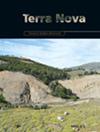Loss of loess in the geological record due to poor preservation
IF 1.7
3区 地球科学
Q2 GEOSCIENCES, MULTIDISCIPLINARY
引用次数: 1
Abstract
Loess deposits are widespread in the Quaternary, but relatively rare in older geological records. This disparity is commonly linked to the unique climate conditions of the Quaternary, but those cannot fully explain the scarcity of loess in older records. Instead, we propose that the poor preservation of loess also plays an essential role. To test this hypothesis, we assess the preservation potential of loess by quantifying its modern‐day distribution in active sedimentary basins. This analysis shows that on the global scale only 20% of loess occurs in basins of which the majority is in a foreland setting. This could be due to nearby silt‐producing mountains and the effects of rain shadow aridity. The other 80% is ultimately either eroded or reworked and therefore poorly preserved in the long term. This conclusion implies that loess deposits may have been more common in pre‐Quaternary periods, despite being less abundant in the geological record.黄土在地质记录中因保存不善而流失
黄土沉积在第四纪广泛存在,但在更古老的地质记录中相对较少。这种差异通常与第四纪独特的气候条件有关,但这些气候条件并不能完全解释旧记录中黄土的稀缺。相反,我们认为黄土保存不良也起着重要作用。为了验证这一假设,我们通过量化其在活动沉积盆地中的现代分布来评估黄土的保存潜力。这一分析表明,在全球范围内,只有20%的黄土发生在盆地中,其中大部分是在前陆环境中。这可能是由于附近产生淤泥的山脉和雨影干旱的影响。另外的80%最终要么被侵蚀,要么被改造,因此从长远来看保存得很差。这一结论表明,尽管黄土沉积在地质记录中较少,但在前第四纪可能更为普遍。
本文章由计算机程序翻译,如有差异,请以英文原文为准。
求助全文
约1分钟内获得全文
求助全文
来源期刊

Terra Nova
地学-地球科学综合
CiteScore
4.80
自引率
8.30%
发文量
59
审稿时长
2.3 months
期刊介绍:
Terra Nova publishes short, innovative and provocative papers of interest to a wide readership and covering the broadest spectrum of the Solid Earth and Planetary Sciences. Terra Nova encompasses geology, geophysics and geochemistry, and extends to the fluid envelopes (atmosphere, ocean, environment) whenever coupling with the Solid Earth is involved.
 求助内容:
求助内容: 应助结果提醒方式:
应助结果提醒方式:


